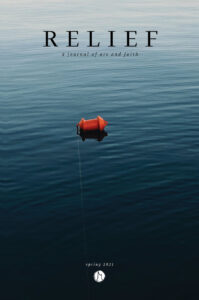Julia Dallaway
On a Friday evening in late January, I had the privilege of presenting my writing to the Oxford Friends’ writers’ group, led by Stephen Yeo. This setting provided the rare opportunity for me to discuss both my academic writing and my creative writing, which I view as deeply intertwined with each other. I read aloud two pieces of work: a creative essay entitled ‘The Great Revelation’ (published in 2021 in Relief: A Journal of Art and Faith), followed by an academic paper called ‘Shimmer and Decay: Joan Didion’s Image-Based Life-Writing Essays’ (which I recently presented at Oxford’s English Faculty).
Despite their contrasting writing styles, these two pieces shared the same preoccupation with narrative, especially the ways we impose narrative structure upon our life experiences. The first essay was autobiographical, recounting my own religious journey through evangelicalism and then Quakerism. The essay describes how, after a transformative experience, I committed with zeal to the evangelical faith and the tight “before and after” structure of its salvation narratives (or “testimonies”). In the words of the essay: ‘I found a single seam down the centre of my life and unpicked all the other threads’. When that “before and after” story began to ring false, because overly simplistic, I turned to the wordlessness of Quakerism:
I lost my story. Four years on and in a different city, my faith had crawled through long tunnels of doubt and emerged as something tentative and new. On brisk Thursday mornings in the husk of winter, I got up in the dark, walked a couple of streets, and sat down in a small circle of bodies with a single candle at our centre. I sat there in my patch of darkness, relieved to be free of expectations. The room was walled with glass and looked out onto a garden, and during the half-hour of the silent Quaker meeting, the shadow cast by the candle dwindled and the room filled up with sun.
Later, I learned about apophatic spirituality: truth that is found where language becomes undone.
The religious journey told in this essay is also a literary one, as my spiritual shifts occurred in parallel with my first encounters with the modernist literature of the early twentieth century, by writers such as Virginia Woolf and T. S. Eliot. Modernism’s innovative literary forms, such as the stream-of-consciousness novel or the associatively-structured essay, offered me a more satisfying representation of the complexity of life experience.
In my subsequent academic paper, I applied the same ideas about narrative to a very different—although perhaps similarly disorientating—experience: the essayist Joan Didion’s experience of the counterculture movement in 1960s America. Faced with the chaos of her contemporary society, Didion suggests that snapshot-style images could be the most authentic way of representing life. She rejects storytelling as ‘the imposition of a narrative line upon disparate images’ and instead grounds her writing in ‘images that shimmer around the edges’. This paper looked at Didion’s recurring images of “shimmering”, and how they might relate to diverse aspects of her personal and historical context, from migraine auras to hallucinogenic drugs to Cold War nuclear anxiety.
My two readings led to some surprising responses (people unanimously favoured the creative piece) and a nuanced discussion on how less-privileged classes in society, without access to modernist formal innovations, may in fact find narrative liberating in certain ways. I am grateful for the many perspectives offered, which will undoubtedly feed back into my doctoral thesis and creative work.
This Month’s Forty-Three Newsletter Contents
- March 2023
- Children and Young People and Families Update
- Washing in Winter
- A Talk on the ‘Failure of Narrative’
- Call for a Counsellor
- Please Return Spare SALTO Key Cards
- Quaker Resonances in Psychoanalytic Thinking
- All-Age Worship: Sunday 5 March
- Monthly Appeal – March 2023
- EAPPI UK & Ireland are Recruiting for their Next Cohort of Human Rights Monitors!
- Book Review: For Thy Great Pain have Mercy on My Little Pain
- Post of Deputy General Manager Oxford Quaker Meeting
- Britain Yearly Meeting
- Oxford Quakers on Art
- How Do Quaker Meetings Do Outreach and Welcome Newcomers?
- SERVING OUTSIDE THE QUAKER COMMUNITY
- Oxford Meeting Quaker and Answer – March 2023
- From Quaker Faith and Practice
- Meetings for Worship – March 2023
Back to March 2023 Newsletter Main Page
Forty-Three Newsletter • Number 527 • March 2023
Oxford Friends Meeting
43 St Giles, Oxford OX1 3LW
Copyright 2023, Oxford Quakers

